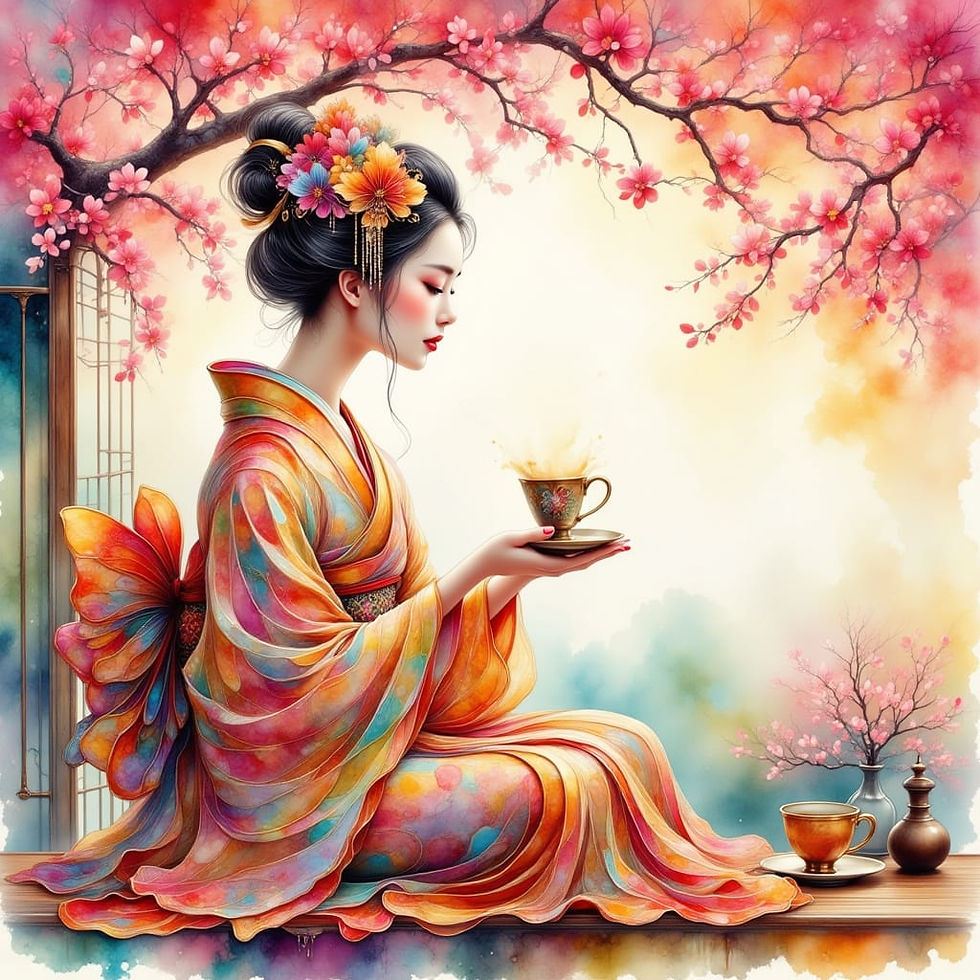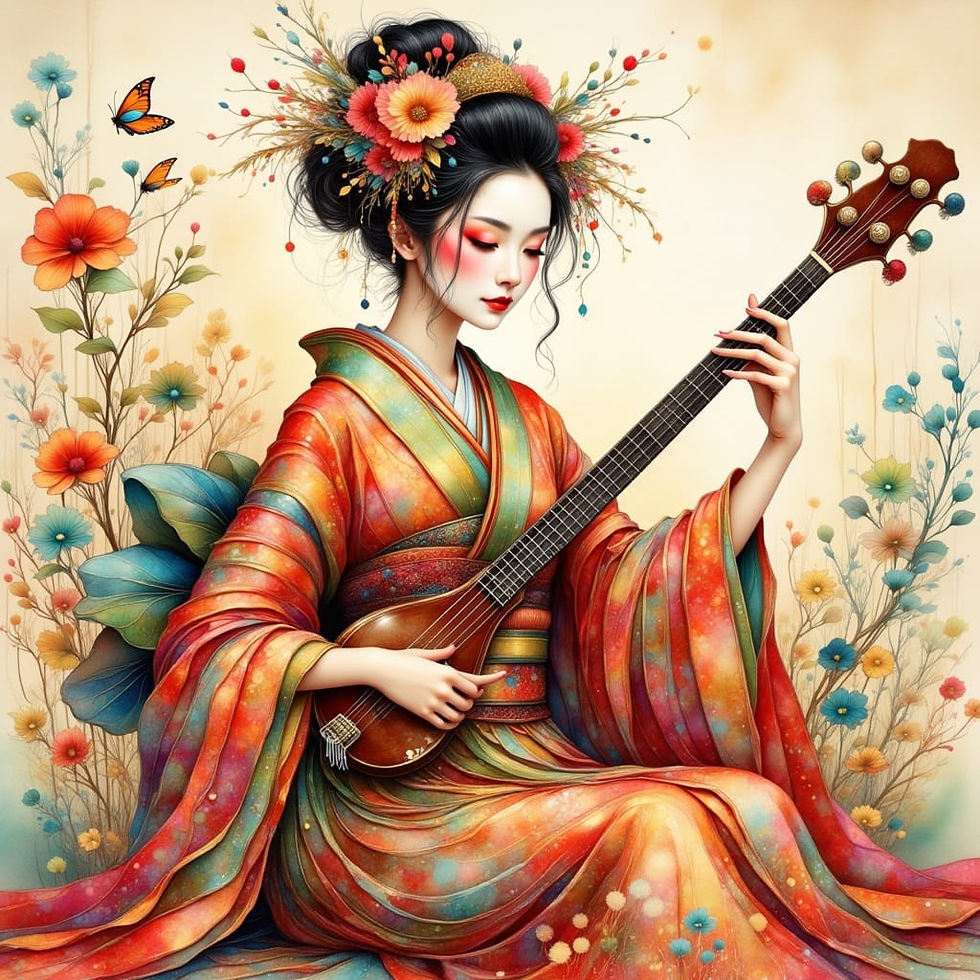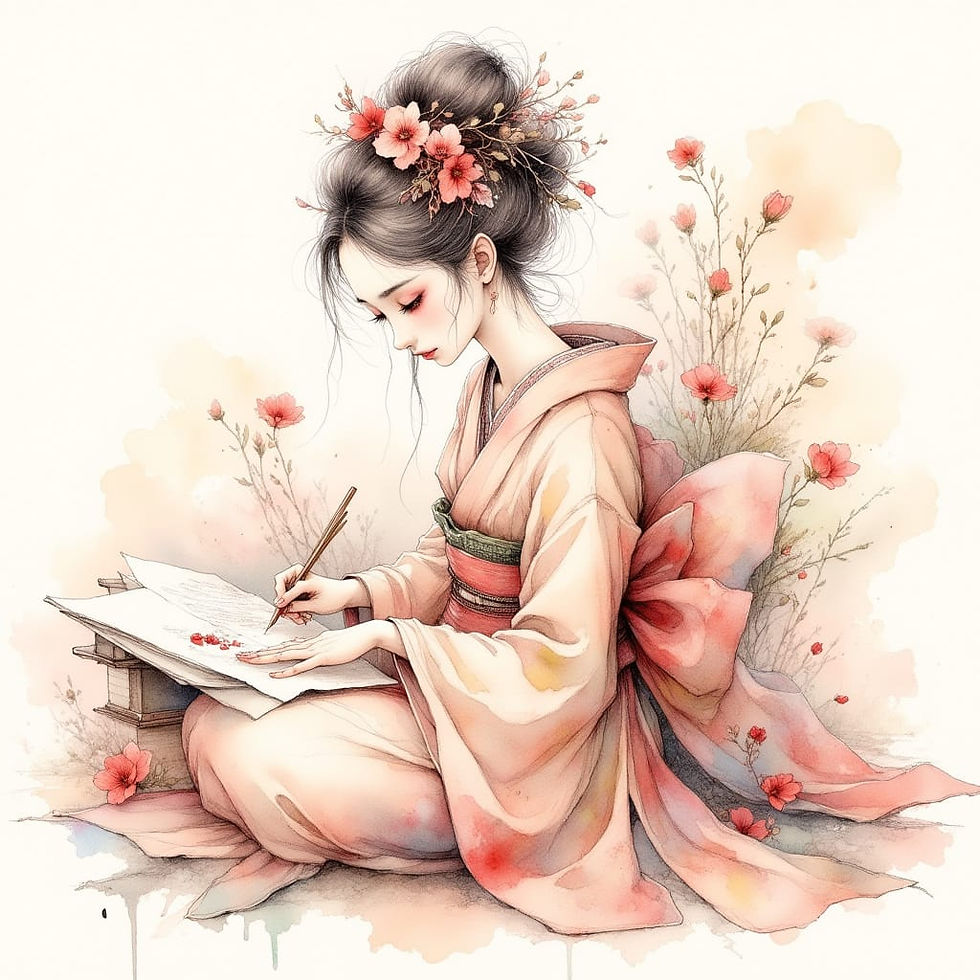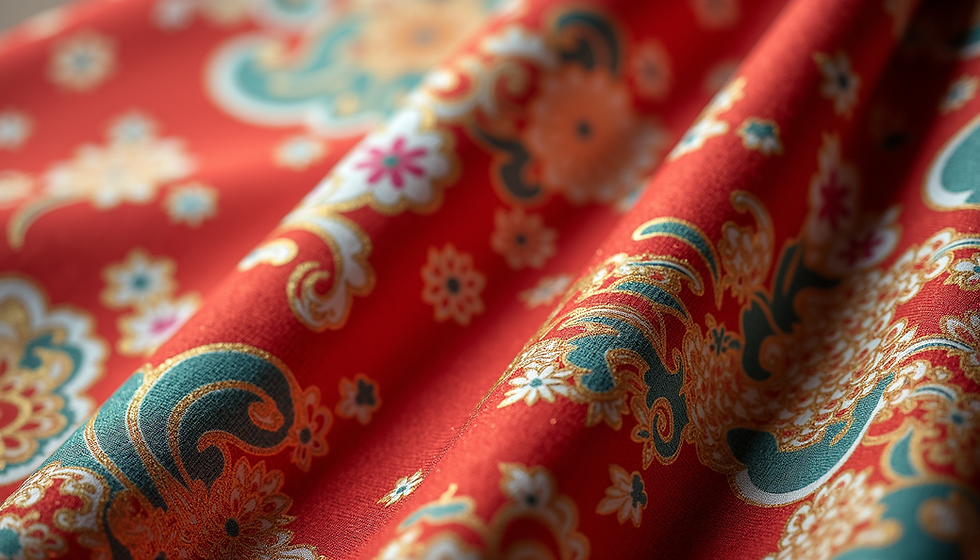Life in the Flower and Willow World – The Geisha's Path
- Larisa Ion
- Jul 1
- 5 min read
Updated: Jul 12
The image of the geisha, with her exquisite kimono, painted face, and mastery of traditional arts, is instantly recognizable as an icon of Japanese culture. These dedicated "art persons" have a fascinating history deeply intertwined with Japan's rich cultural fabric, evolving over centuries into the refined entertainers we know today. Their role has always been centered on offering sophisticated artistic performance and engaging companionship, standing distinct as professional artists.
But what does it truly mean to be a geisha? It's a life of profound dedication, rigorous training, and unwavering commitment to the preservation of traditional Japanese arts. To understand the geisha fully, we must step beyond their elegant facade and into the structured, disciplined world of their daily existence – the karyūkai, or "flower and willow world."

The Road to Mastery: Years of Dedicated Training
Becoming a geisha is not a career one simply chooses; it is a vocation that demands years, often a decade or more, of intense study and practice. The journey typically begins at a young age, with aspiring geisha (known as shikomi and later minarai) entering a geisha house or okiya. Here, under the watchful guidance of the "mother" (okā-san) of the house and senior geisha, their extensive education truly commences, shaping every aspect of their future artistic life.
The curriculum is comprehensive and relentless, focusing on mastering a wide array of classical Japanese performing arts. Classical Japanese Dance (Nihon Buyō) is foundational. Every subtle movement, from a graceful flick of the wrist to a delicate turn of the head, is meticulously taught to convey intricate emotion and narrative. Lessons involve countless repetitions, building muscle memory, profound grace, and expressive power that can tell a story without a single spoken word. Alongside dance, traditional music is paramount. Geisha must achieve deep proficiency on instruments like the three-stringed shamisen, mastering complex melodies and accompanying vocals. Many also learn the koto (a beautiful zither-like instrument), various percussion instruments such as the ko-tsuzumi (a small shoulder drum), and the bamboo flute (fue), each requiring distinct techniques and artistic understanding. They learn a vast repertoire of traditional songs from various styles like Nagauta, Kouta, and Jikuta, often accompanying themselves on the shamisen, with each piece possessing its own unique style and emotional depth.

Perhaps less tangible but equally vital is the art of conversation. Geisha are trained in the delicate balance of engaging, witty, and discreet dialogue. They learn to listen attentively, respond intelligently, and gracefully guide discussions to ensure the comfort and enjoyment of their guests. This includes cultivating a broad knowledge of current events, classical literature, poetry, and even local stories – all delivered with charm, intelligence, and the utmost discretion, making every interaction stimulating and pleasant. Furthermore, their training extends to other refined cultural practices such as the precise movements and spiritual focus of the Tea Ceremony (Sadō), the artistic principles of Flower Arranging (Ikebana), and the disciplined strokes of Calligraphy. These arts further hone their aesthetic sensibilities and provide additional avenues for elegant interaction with patrons, showcasing their comprehensive artistic cultivation. Finally, the intricate process of wearing their beautiful, multi-layered kimonos, and the specific etiquette associated with every gesture, bow, and movement, is perfected over years, reflecting a deep respect for tradition and an unwavering commitment to presenting a flawless appearance.
This isn't merely rote learning; it's an immersive journey into the very soul of Japanese tradition, cultivating not just technical skills but also profound elegance, poise, and a deep cultural understanding. The discipline required is immense, shaping them into the refined artists known the world over.

A Day in the Life: Beyond the Allure
While their evenings are vibrantly filled with performance and social engagement at tea houses and banquets (ozashiki), a geisha's day is often structured around their rigorous training and preparation. Mornings are typically dedicated to continued lessons, intensive practice sessions to hone their artistic skills, and the meticulous personal preparation required for their evening engagements. This includes elaborate hair styling (often utilizing intricate wigs for convenience in modern times, though traditional nihongami are still worn for special occasions), the precise application of their characteristic makeup, and the complex, time-consuming process of donning their exquisite kimonos with perfect precision.

Their life is one of quiet dedication behind the scenes, a constant pursuit of perfection that culminates in the vibrant, enchanting performances that define their public image. This journey is often marked by countless hours of practice, meticulous attention to detail, and an unwavering commitment to their craft. Each movement, each note, and each brushstroke is the result of rigorous training and a deep understanding of the art form they represent. It is a world where art and discipline intertwine, creating a truly enduring legacy of beauty and cultural preservation. Behind the curtain, these artists engage in a relentless quest for excellence, often sacrificing personal time and comfort to hone their skills. They immerse themselves in the history and techniques of their discipline, drawing inspiration from past masters while innovating new expressions of their art. This dedication is not merely for personal gain; it is also a profound respect for the traditions and cultural narratives that they carry forward through their performances. In rehearsals, the atmosphere is charged with creativity and intensity. Artists collaborate, critique, and support one another, forging bonds that extend beyond the stage. These interactions are essential, as they foster a community of like-minded individuals who share a collective passion for their art. The process is often grueling, filled with challenges that test their resolve and push them to new heights of artistic expression. The culmination of this hard work is evident in the performances that captivate audiences. Each presentation is a tapestry woven from the threads of their dedication, artistry, and the rich cultural heritage they embody. Spectators are drawn into a world where emotions are conveyed through movement, sound, and visual artistry, leaving a lasting impression that resonates long after the final curtain falls. Furthermore, these performances serve a greater purpose; they act as vessels for cultural preservation and education, allowing audiences to connect with histories and narratives that might otherwise fade into obscurity. By sharing their art, these dedicated individuals ensure that future generations can appreciate and learn from the rich tapestry of human creativity and expression. In this way, their quiet dedication behind the scenes not only shapes their own identities as artists but also contributes to a larger cultural dialogue that celebrates diversity, heritage, and the transformative power of art.

The geisha's path is a testament to the enduring power of art and devotion, showcasing a unique blend of cultural heritage, skill, and grace that has captivated audiences for centuries. How do you imagine such a traditional role adapts and thrives in the modern world?



Comments